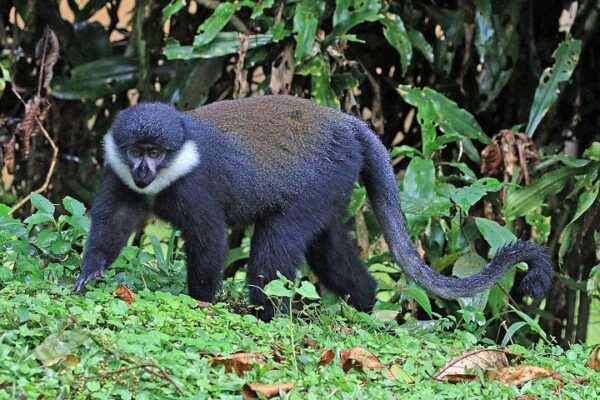Gishwati-Mukura National Park, is located in western Rwanda. The park is a remarkable destination known for its rich biodiversity and conservation efforts. Here is detailed information about the park:
History Of The Park
Deforestation: The area suffered significant deforestation due to agricultural expansion, illegal mining, and human settlement.
Restoration: Conservation efforts began in earnest in the early 2000s, with reforestation and wildlife protection initiatives leading to the establishment of the national park.
Ecosystems and Habitat
Forests: Comprises montane rain forests, home to a variety of plant and animal species.
Rivers and Streams: Numerous watercourses provide vital habitats for aquatic life and support the surrounding ecosystems.
Wildlife
Primates:
Chimpanzees: One of the key attractions, these primates are often seen in the Gishwati forest.
Golden Monkeys: Another primate species that visitors can encounter.
L’Hoest’s Monkeys: These monkeys are also present and relatively easy to spot.
Mammals:
Duikers: Small antelope species that are commonly found in the forest underbrush.
Forest Buffaloes: Occasionally seen in the park.
Birds:
Over 230 bird species, including Albertine Rift endemics like the Ruwenzori Turaco and the Mountain Yellow Warbler.
Reptiles and Amphibians:
The park is home to several species of reptiles and amphibians, which are integral to its ecosystem.
Conservation Efforts
Reforestation: Large-scale tree planting initiatives to restore forest cover.
Wildlife Protection: Anti-poaching measures and habitat preservation efforts to protect the park’s biodiversity.
Community Involvement: Local communities are engaged in conservation activities and benefit from eco-tourism initiatives.
Tourism and Activities
Guided Nature Walks: Explore the forest with knowledgeable guides who provide insights into the flora and fauna.
Primate Tracking: Opportunities to track and observe chimpanzees and other primates in their natural habitat.
Bird Watching: With a rich diversity of bird species, the park is a haven for birdwatchers.
Cultural Experiences: Interaction with local communities to learn about traditional practices and their role in conservation.
Accommodation
Eco-Lodges: There are eco-friendly lodges and campsites in and around the park that offer comfortable accommodation options for visitors.
 Best Time to Visit Gishwati Mukura National Park
Best Time to Visit Gishwati Mukura National Park
Dry Season: June to September and December to February is the best time for visiting Gishwati National Park for wildlife viewing and trekking as the trails are drier and more accessible.
Wet Season: March to May and October to November are ideal for birdwatching, although the trails can be muddy and more challenging.
How To Get to Gisakura Mukura National Park
By Road: The park is accessible by road from Kigali, approximately a 3-4 hour drive.
Local Transport: Visitors can hire private cars or use local transport options to reach the park.
Accommodation
Eco-Lodges: There are eco-friendly lodges and campsites in and around the park that offer comfortable accommodation options for visitors.